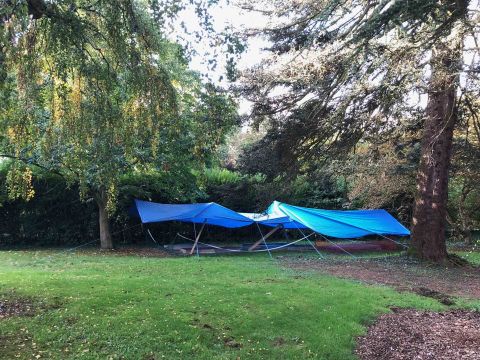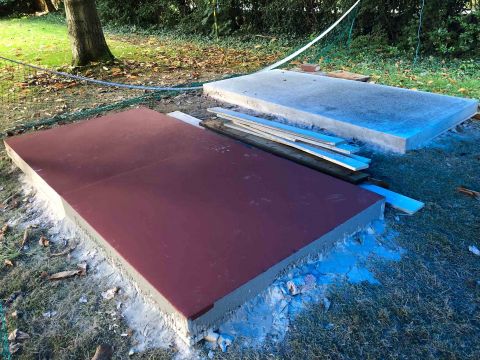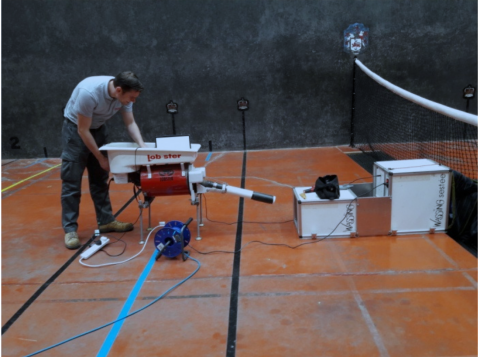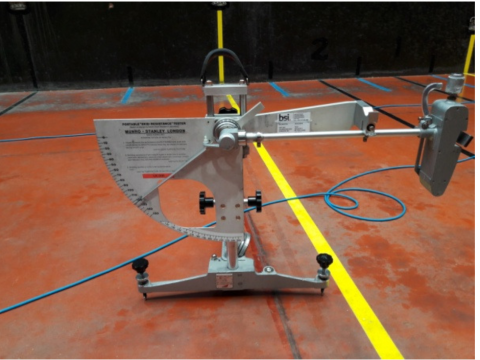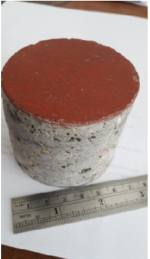
Before embarking on the floor restoration works the club led by Vice Chairman Bruce Paxton carried out extensive investigations to understand the composition of the floor and what makes the Bickley court the ideal tennis playing surface.
We took core samples which allowed some Bickley myths to be laid to rest. The floor is solid and not of a Roman hypocaust construction. Analysis of the court surface also revealed that the colour is provided by ferrous oxide and not by Ox blood.
With the assistance of member and Materials Engineering Professor John Murphy, Bruce and the team were able to establish that the court is very smooth. In fact it is a lot smoother than a modern gymnasium floor which would offer more 'grab' to both ball and shoes.
It also seems that the concrete is quite soft (for concrete) with a consistency that in many situations might be considered to be bad concrete.
Armed with the results of our analysis we had a number of concrete slabs laid on the lawn to see if modern concrete could match the characteristics of the Bickley floor. The slabs were laid from different concrete mixes and were finished to different levels of levels of polish with different colourants also explored.
We analysed the surfaces of the slabs to find the best match. Our Pro Tom slid his tennis shod foot over the floor to find the one with the right feel and sports floor specialists Labsoport attempted much the same in a slightly more scientific manner. They took ball pace and foot-slip measurements from each of the slabs and from the court floor for comparison. Fortunately for Labosport and for Tom they both agreed that the same slab best matched the floor and the numbers indicate that we have found a very close match to the original floor.
Having completed the work we were pleased to share our findings with the T&RA who then generously made a contribution towards funding the research work.



